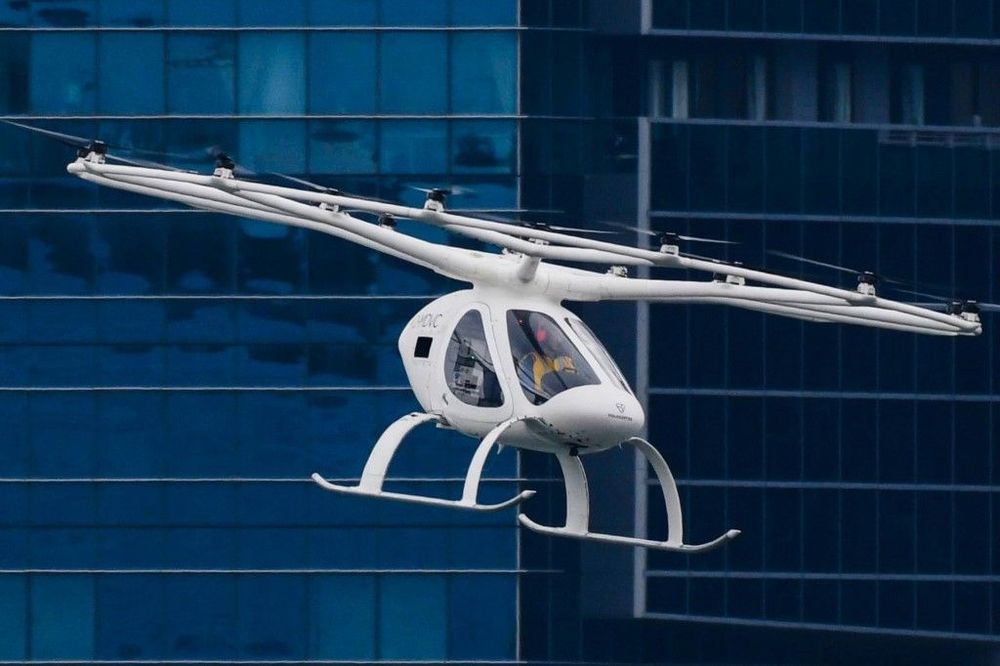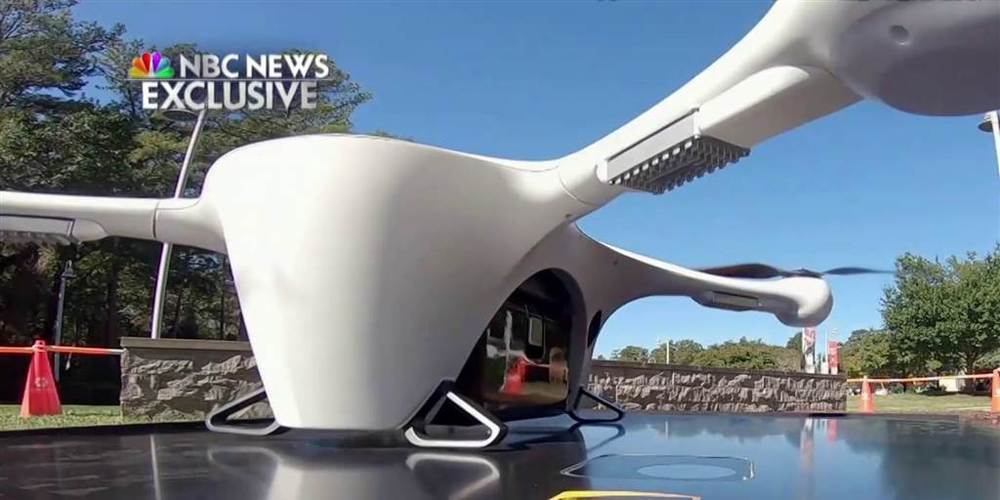While maybe not as riveting as your favorite movie, this video published by Amazon shows it’s current version delivery drone in action. It is worth noting that the takeoff and landings are on a identified platform landing areas. It also does not show the transfer of the items from pick-up to delivery but it does give you an idea of the flight pattern of the drone and the interesting way that it handles take off and landings.
Category: drones – Page 113

Uber’s New Delivery Drone Absolutely Reeks of Vaporware [Updated]
Uber has announced it’s developing a new drone it hopes to use for Uber Eats deliveries one day. Eric Allison, the head of Uber Elevate, talked about the new drone in Detroit yesterday at the Forbes Under 30 Summit. And while the mock-up design looks pretty cool, with rotating wings and six rotors, the details released so far raise some red flags.
According to Forbes (emphasis ours):
The new drone design can carry dinner for up two people and features six rotors, the company says. Its battery is designed for eight minutes, including loading and unloading, and it can only do relatively short hauls. The drone has a roundtrip range of 12 miles, or a total flight time of 18 minutes.

Drone-like taxi whizzes over Singapore, firm eyes Asian push
A drone-like flying taxi whirred over Singapore’s waterfront Tuesday, with the firm behind the test hoping the aircraft will revolutionize travel in traffic-choked Asian cities.
The 18 propeller vehicle, developed by German firm Volocopter and with a pilot onboard for safety during the test flight, took off from a promontory and flew for about two minutes and 30 seconds around the Marina Bay district.
Heavy rains in the morning almost delayed the flight, but the skies cleared in time for the battery-operated, two-seater taxi to quietly fly past skyscrapers.

Using Drones to Plant 20,000,000 Trees
Join #TeamTrees at https://teamtrees.org/
Create your own personal website at https://wix.com/go/MarkRober
ALSO, see how I make all my builds using Wix: https://markroberbuildinstructions.com
Thanks to my friends at Discovery Channel for helping us find Arbor Day in the first place and then capturing all the footage for my video. They are absolute champions to work with I’ve got some really cool projects coming up soon.
Learn more about my smart friends at DroneSeed- https://www.droneseed.co/
Thanks to www.carlyletools.com for giving my workbench tools a seriously needed upgrade!

The Drones Are Coming! How Amazon, Alphabet and Uber Are Taking to the Skies
Flying robots that deliver packages to people’s doorsteps are no longer science fiction. Companies including Amazon.com Inc., Alphabet Inc.’s Wing and Uber Technologies Inc. are starting the most advanced trials of drone delivery in U.S. history.
While commercial drone delivery faces many hurdles, government-approved tests by the tech giants will mark the first time consumers in parts of the country experience the technology. Wing this month started tests in Christiansburg, Va., while Uber says it will experiment in San Diego…
To Read the Full Story.
Alphabet’s Makani Tests Wind Energy Kites In The North Sea IEEE Spectrum
The idea is simple: Send kites or tethered drones hundreds of meters up in the sky to generate electricity from the persistent winds aloft. With such technologies, it might even be possible to produce wind energy around the clock. However, the engineering required to realize this vision is still very much a work in progress.
Dozens of companies and researchers devoted to developing technologies that produce wind power while adrift high in the sky gathered at a conference in Glasgow, Scotland last week. They presented studies, experiments, field tests, and simulations describing the efficiency and cost-effectiveness of various technologies collectively described as airborne wind energy (AWE).
In August, Alameda, Calif.-based Makani Technologies ran demonstration flights of its airborne wind turbines—which the company calls energy kites—in the North Sea, some 10 kilometers off the coast of Norway. According to Makani CEO Fort Felker, the North Sea tests consisted of a launch and “landing” test for the flyer followed by a flight test, in which the kite stayed aloft for an hour in “robust crosswind(s).” The flights were the first offshore tests of the company’s kite-and-buoy setup. The company has, however, been conducting onshore flights of various incarnations of their energy kites in California and Hawaii.
US Air Force gets its first anti-drone laser weapon from Raytheon
Raytheon has delivered the first anti-drone buggy to the US Air Force, just over year after it introduced the technology. It’s a high-energy laser system mounted on a small all-terrain vehicle, to be specific, which uses electro-optical/infrared sensors to detect and track drones. After it identifies and tracks the unwelcome flying device, it then neutralizes it with its laser in a process that takes a few seconds.

Volocopter takes to Singapore sky, but can air taxis take off?
The air taxi’s maker, German aviation start-up Volocopter, has previously conducted public demonstration flights in Germany, Dubai and Finland.
“[This] is an important milestone for the introduction of urban air mobility, simply because we give people the image in their mind and the opportunity to see how the vehicle behaves in the air, and how quiet it is in full flight,” Volocopter CEO Florian Reuter told Al Jazeera after the test run.
Volocopter is one of several companies developing a drone equivalent to traditional helicopters, and proponents say electrically powered air taxis offer a safer, quieter, emissions-free alternative.